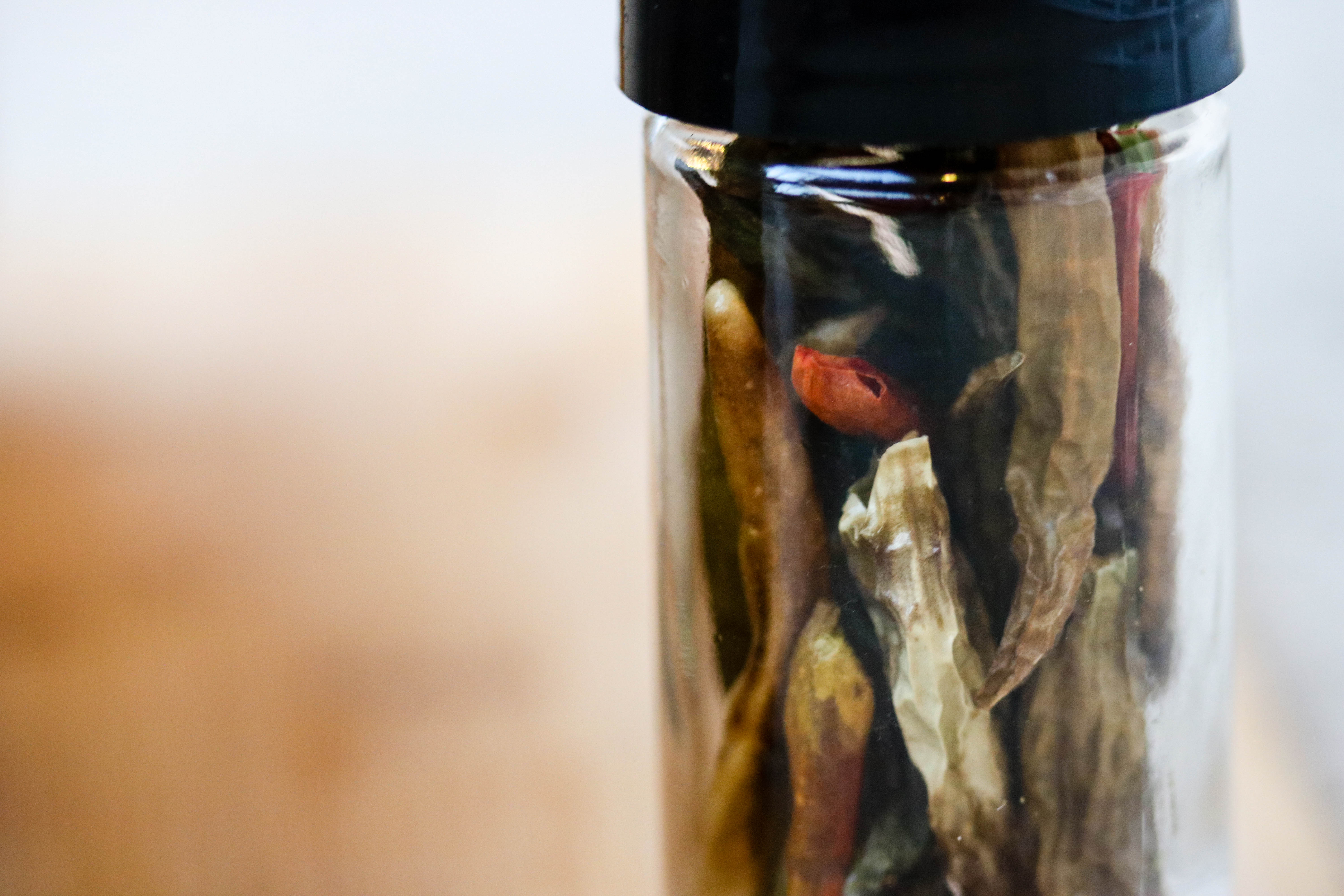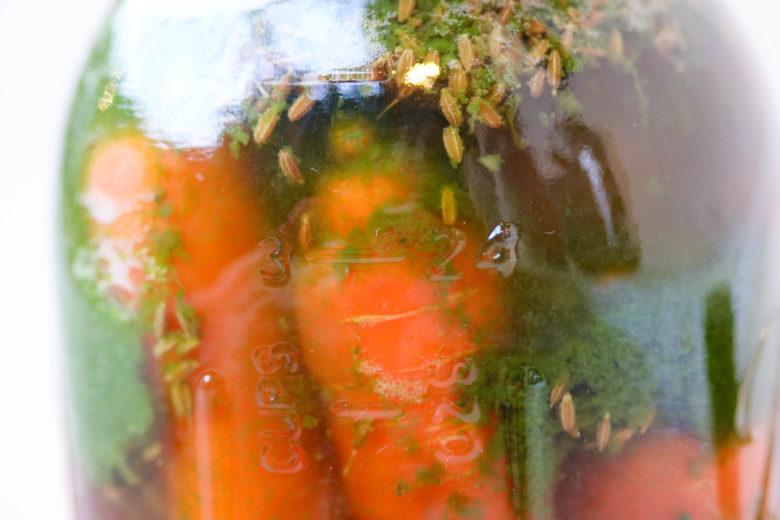One of the easiest ways to enjoy the benefits of fermented foods is pickling vegetables via lacto-fermentation. Not only is the flavor incomparable to vinegar preserved pickles, but they provide a host of probiotics. Also, they don’t require any special equipment to make! And isn’t that a huge bonus in our hectic lives? Our intestinal tract is full of billions of bacteria: some beneficial, some neutral and some harmful. So eating probiotic foods, or foods full of good bacteria, help protect the intestine by lining the colon with bacteria. These bacteria aid healthy bowel movements, balance microflora, and inhibit bad bacteria from proliferating.
All plants have various strains of bacteria living on them, and Lactobacillus is usually on the list. Simply put, fermentation is the process in which various bacteria present on the surface of vegetables eat the sugars in vegetables. This creates the byproduct lactic acid. Lactic acid is a natural preservative that gives traditionally pickled foods their characteristic tangy flavor and inhibit the growth of harmful bacteria on food. In addition to being a preservative, lacto-fermentation retains the vitamin levels and increases the digestibility of foods.
But enough about definitions! Let’s get to a basic recipe that will have you fermenting any vegetable you like! All you need is a mason jar, unchlorinated water, sea salt, a tannin containing component and the vegetables and spices you desire. Throughout this website you will find several recipes to inspire you with variations on the levels given in this blog post in the culturing and fermentation section with different combinations of vegetables and spices, but don’t stop there! This post is designed to inspire and empower you to come up with your own lacto-fermented recipes. When you do, don’t forget to share them with me. 🙂 I love seeing what you create. Finally one more thing, check out these peppers I dried from my garden! They would make an excellent spice addition to any ferment!

Basic Vegetable Lacto-Fermentation Recipe
Ingredients
- 1 qt. filtered water
- 3 tsp noniodized, caking agent free salt
- Firm vegetables of choice
- Spices and seasonings of choice
- Tannin like a bag of black tea, or a couple of grape or horseradish leaves
Equipment:- Mason jar
- Something to weigh down vegetables under brine such as large cabbage leaf with clear rock on top or a baggy filled with brine.
Instructions
- For the brine:
- Mix salt and water together until salt dissolves
For the ferment:- Chop or slice vegetables
- Put a couple of seasonings at the bottom of the quart sized mason jar. Ex: A garlic clove, a tsp of peppercorns, a teaspoon of mustard seed, a sprig of dill, fresh or dried peppers
- Pack in vegetables as tightly as possible half way and add a little more seasoning, plus the tannin.
- Pack more vegetables leaving an inch of space.
- Weigh down the vegetables with one of the methods mentioned under equipment. (The vegetables will rise as bubbles form).
- Screw the lid on.
- Burp the lid (let gas escape) everyday.
- Depending on how hot it is where you live you may end up fermenting for anywhere from 3 days to a couple of weeks. Generally a cooler, slow ferment is better.
- Start trying the vegetables after bubbles are sufficient. The longer you ferment spiciness from peppers, garlic and ginger will mellow out and the ferment will become tangier.
- Enjoy!
7.8.1.24https://www.getculturedkitchen.com/basic-lacto-fermentation/
Get Cultured Kitchen
Ingredients
- 1 qt. filtered water
- 3 tsp noniodized, caking agent free salt
- Firm vegetables of choice
- Spices and seasonings of choice
- Tannin like a bag of black tea, or a couple of grape or horseradish leaves
- Mason jar
- Something to weigh down vegetables under brine such as large cabbage leaf with clear rock on top or a baggy filled with brine.
Instructions
- For the brine:
- Mix salt and water together until salt dissolves
- Chop or slice vegetables
- Put a couple of seasonings at the bottom of the quart sized mason jar. Ex: A garlic clove, a tsp of peppercorns, a teaspoon of mustard seed, a sprig of dill, fresh or dried peppers
- Pack in vegetables as tightly as possible half way and add a little more seasoning, plus the tannin.
- Pack more vegetables leaving an inch of space.
- Weigh down the vegetables with one of the methods mentioned under equipment. (The vegetables will rise as bubbles form).
- Screw the lid on.
- Burp the lid (let gas escape) everyday.
- Depending on how hot it is where you live you may end up fermenting for anywhere from 3 days to a couple of weeks. Generally a cooler, slow ferment is better.
- Start trying the vegetables after bubbles are sufficient. The longer you ferment spiciness from peppers, garlic and ginger will mellow out and the ferment will become tangier.
- Enjoy!


 Save Recipe
Save Recipe